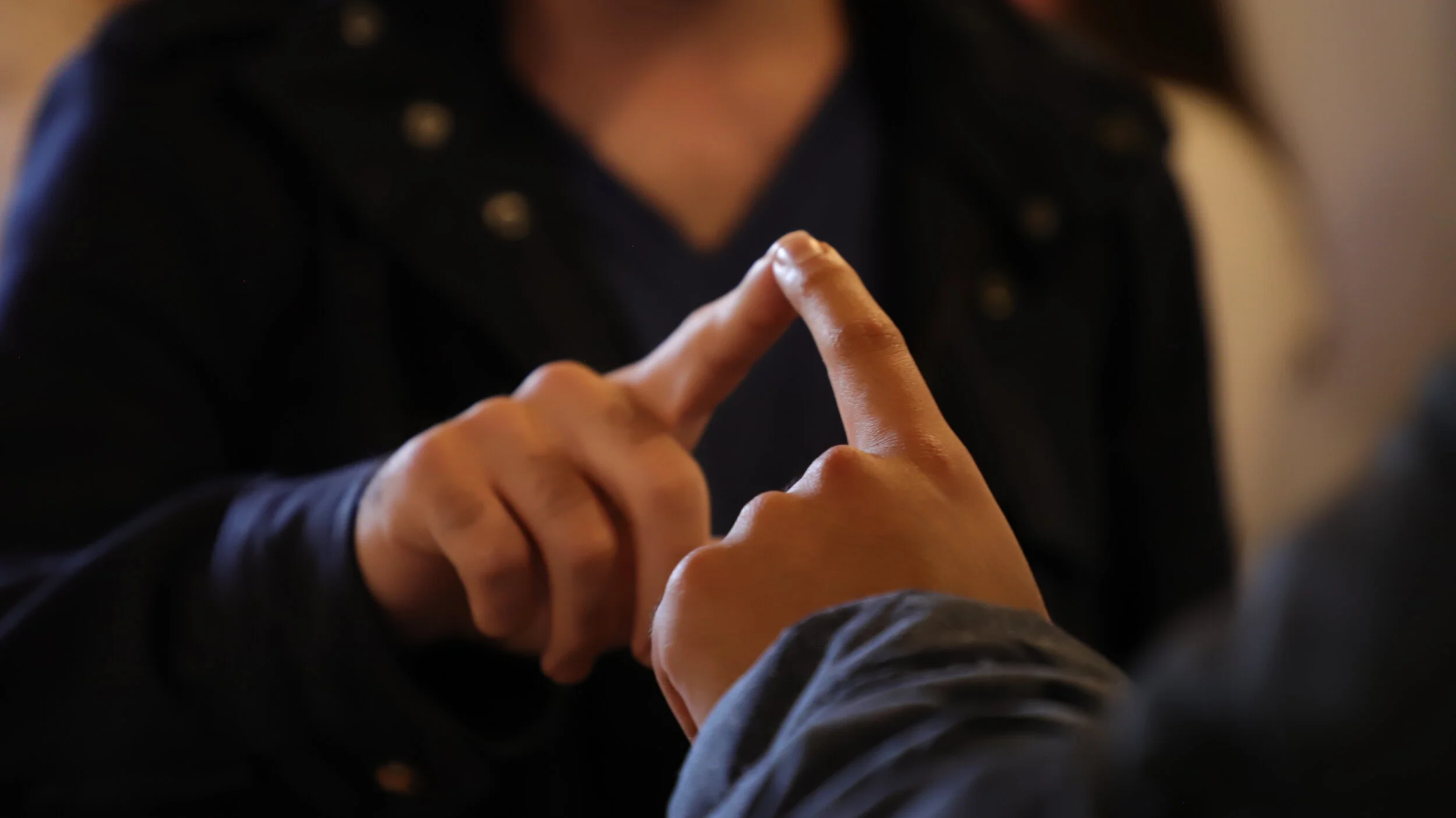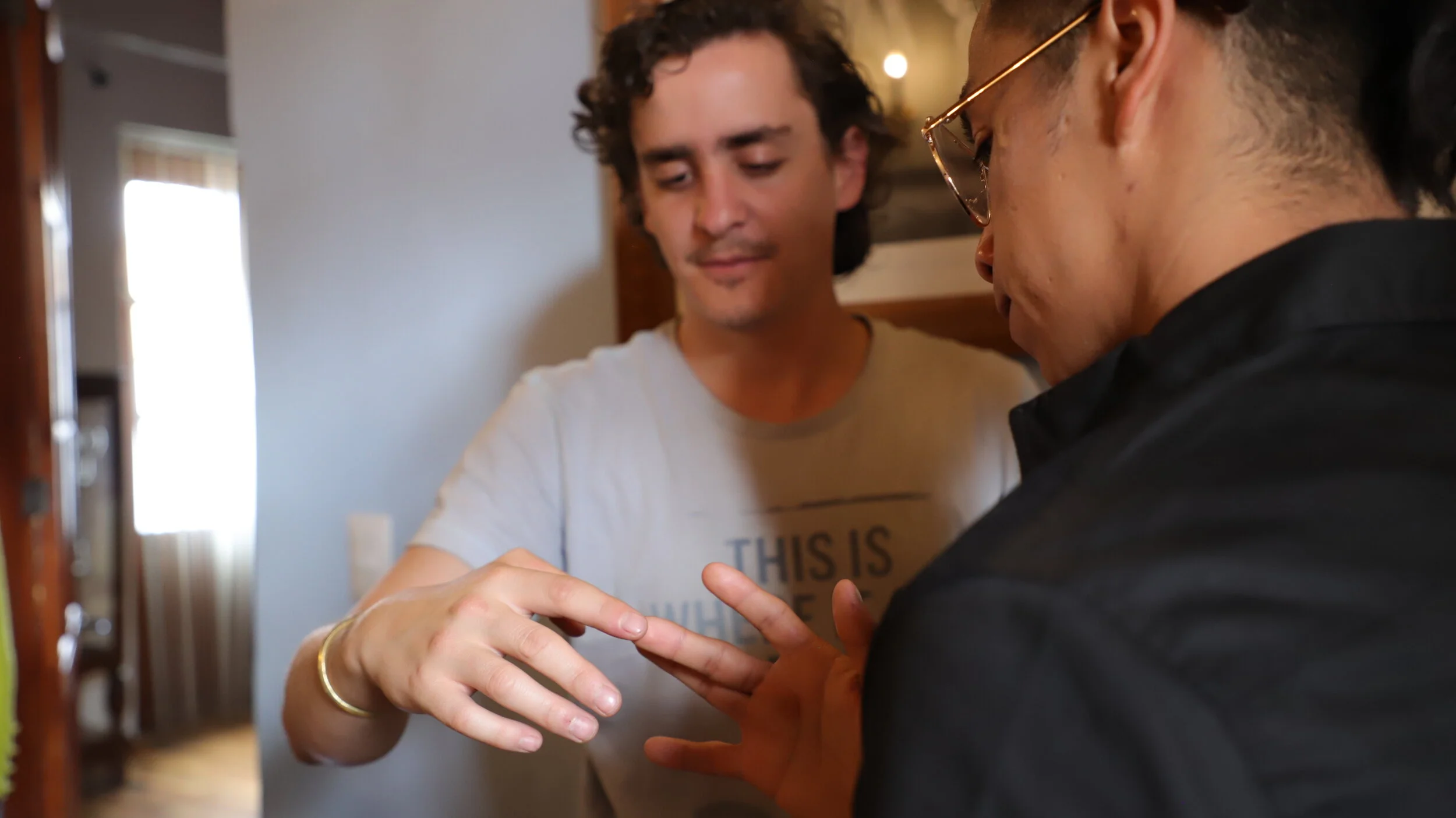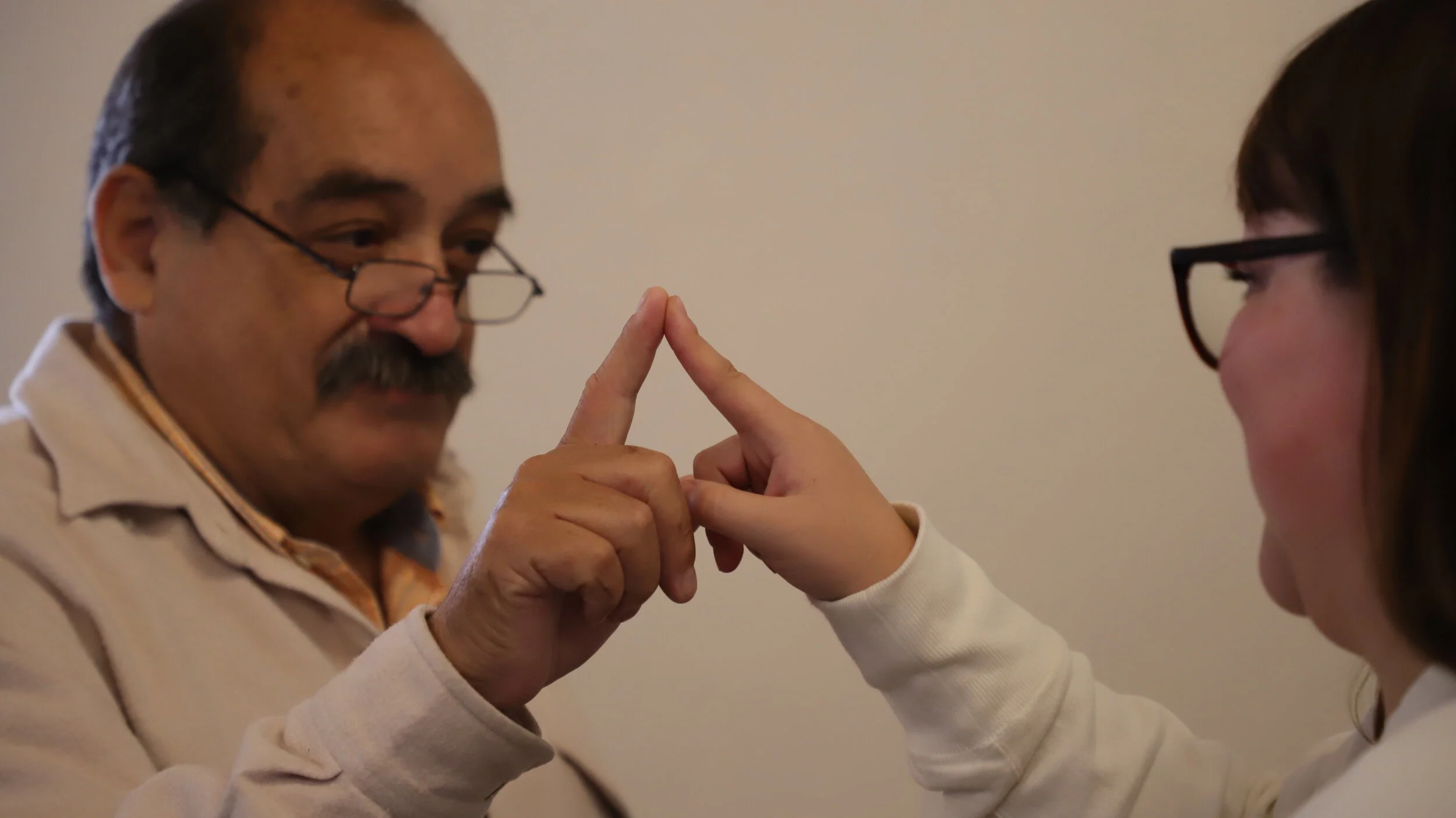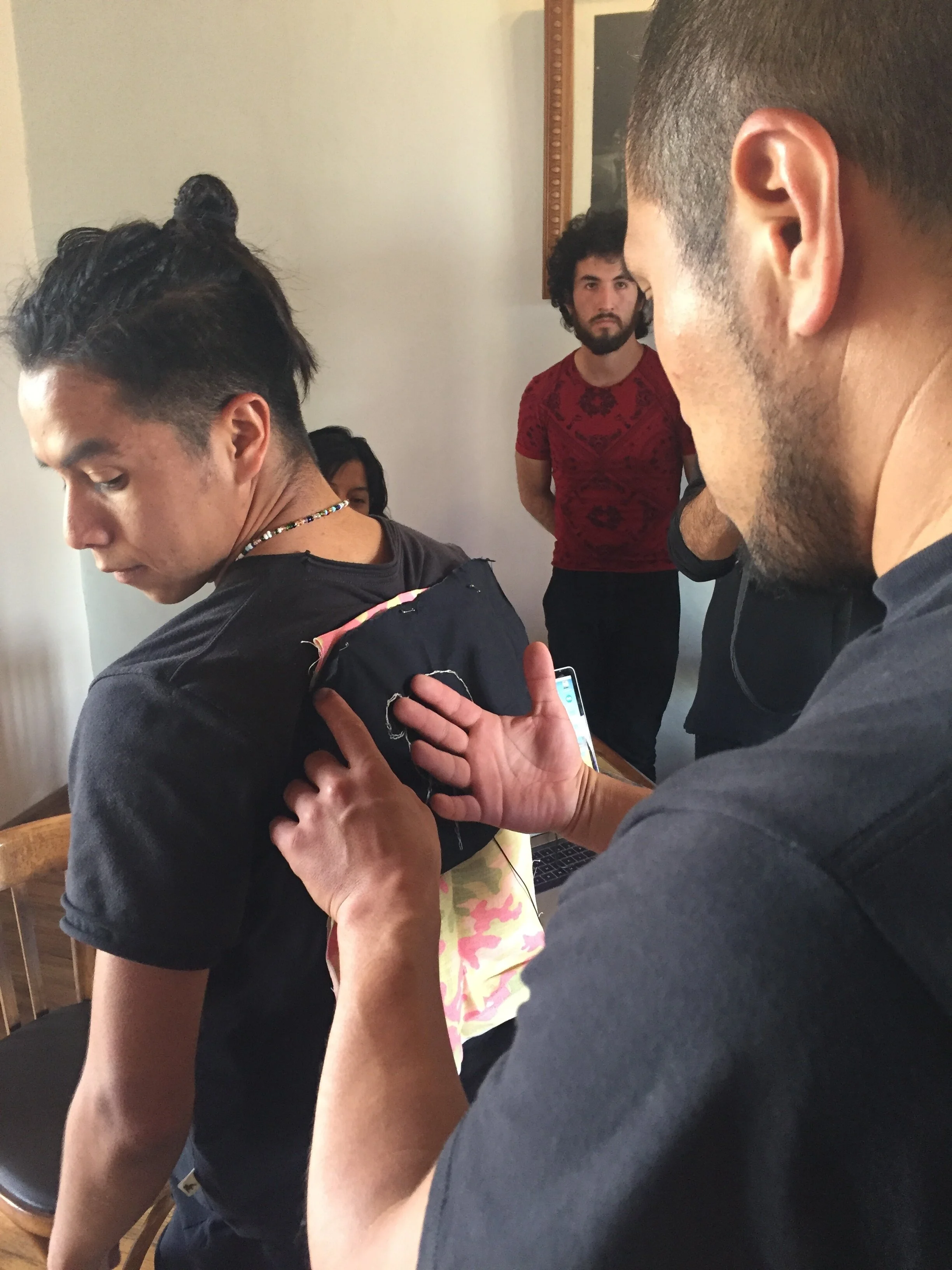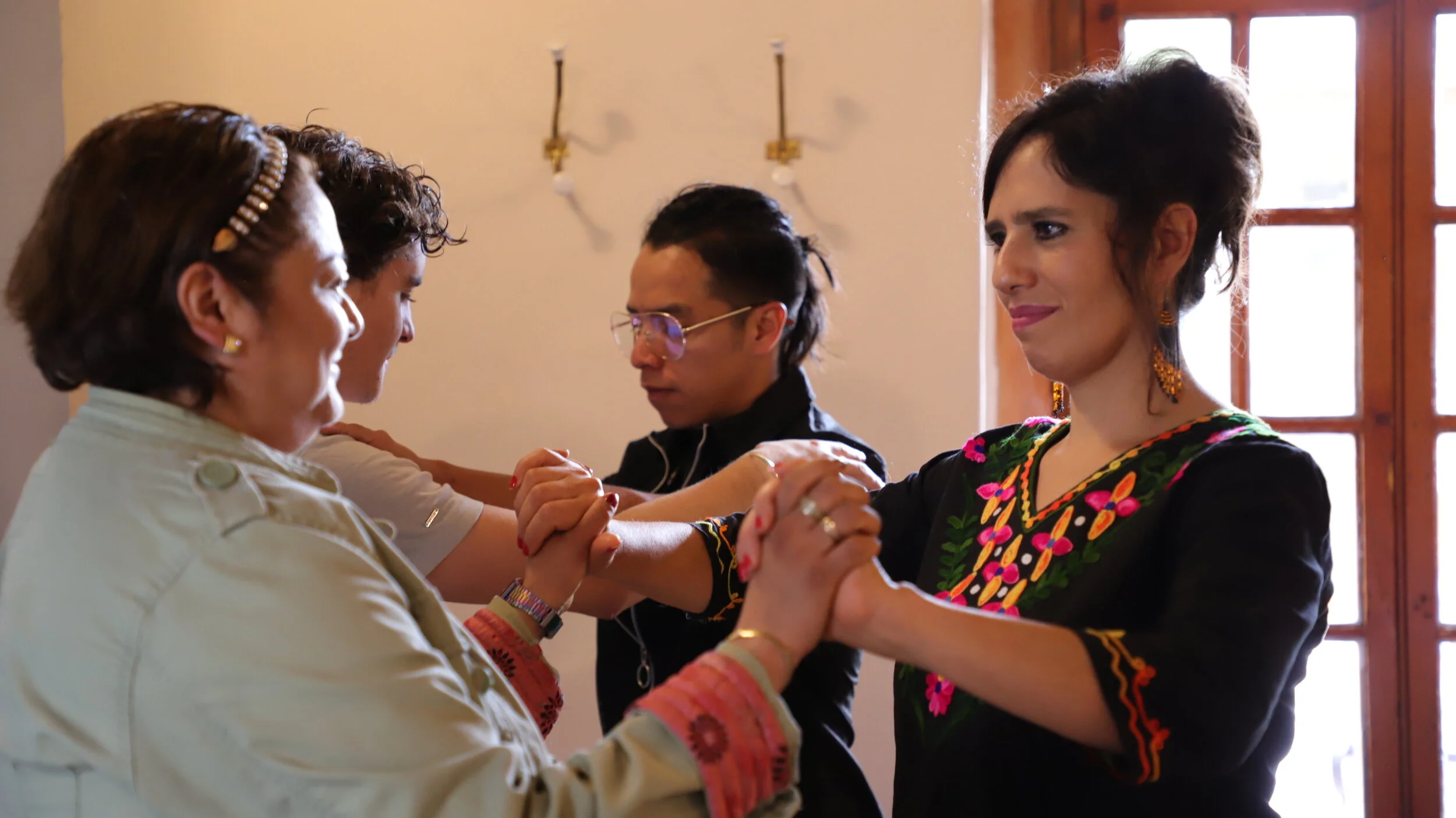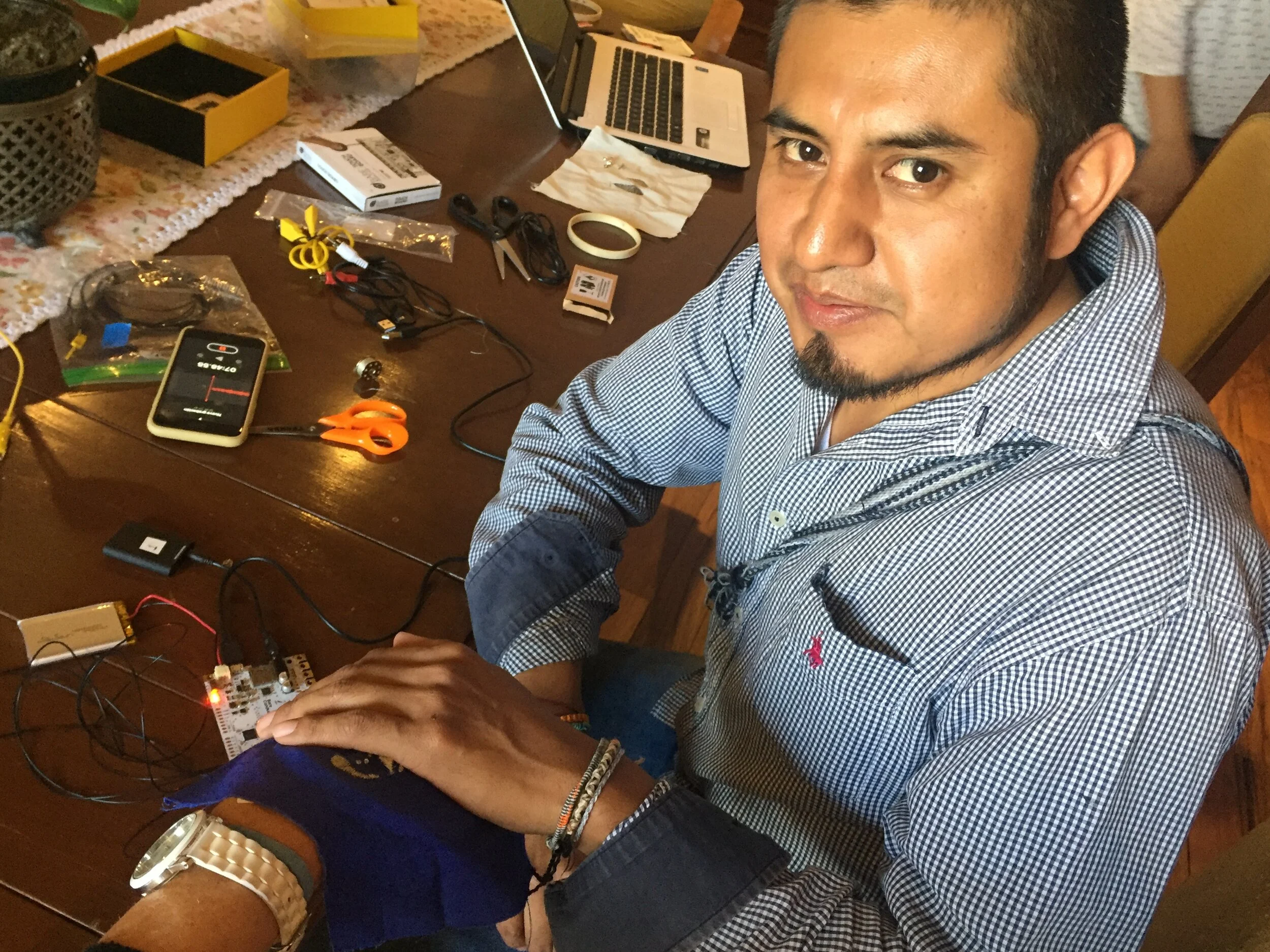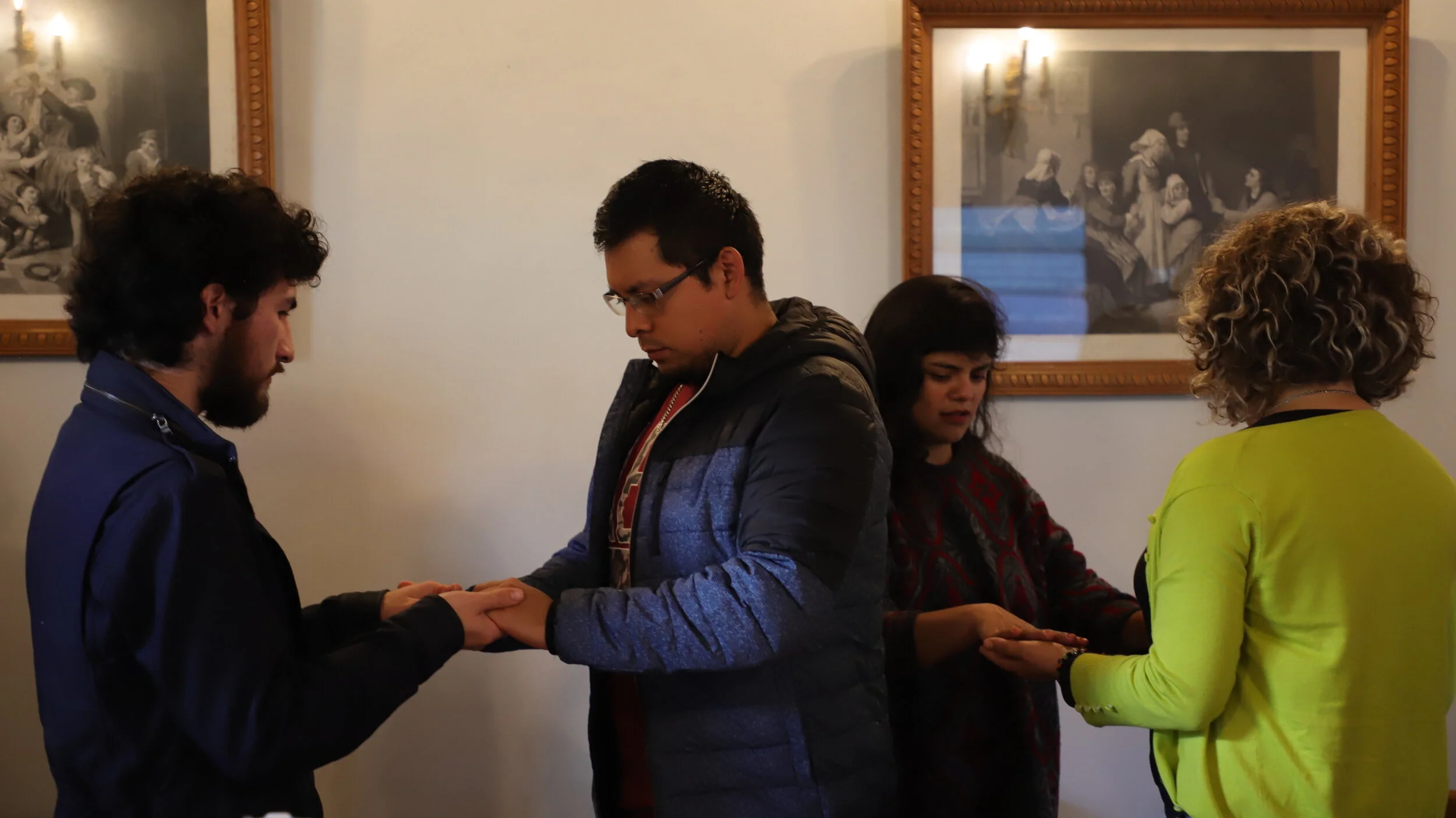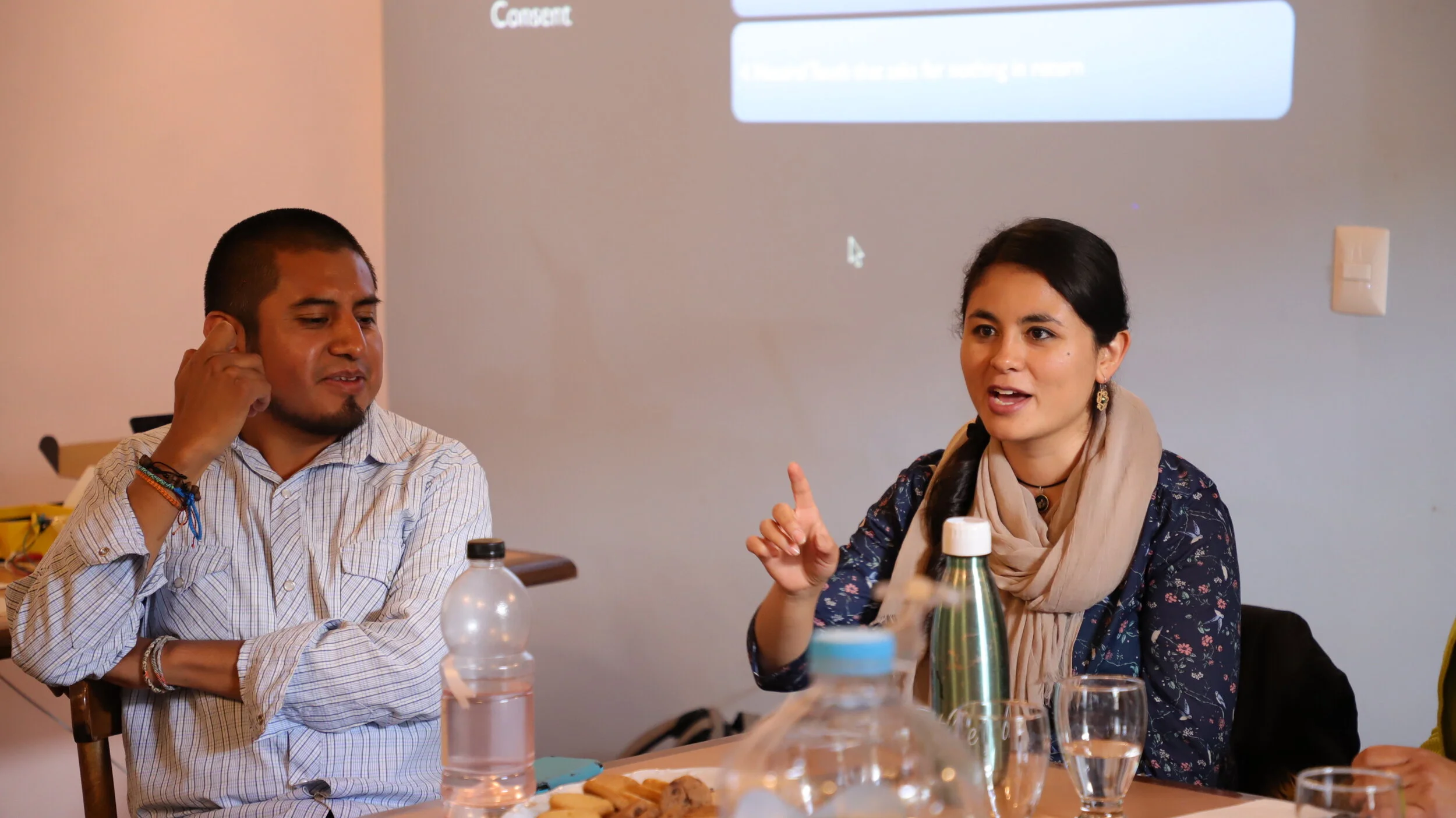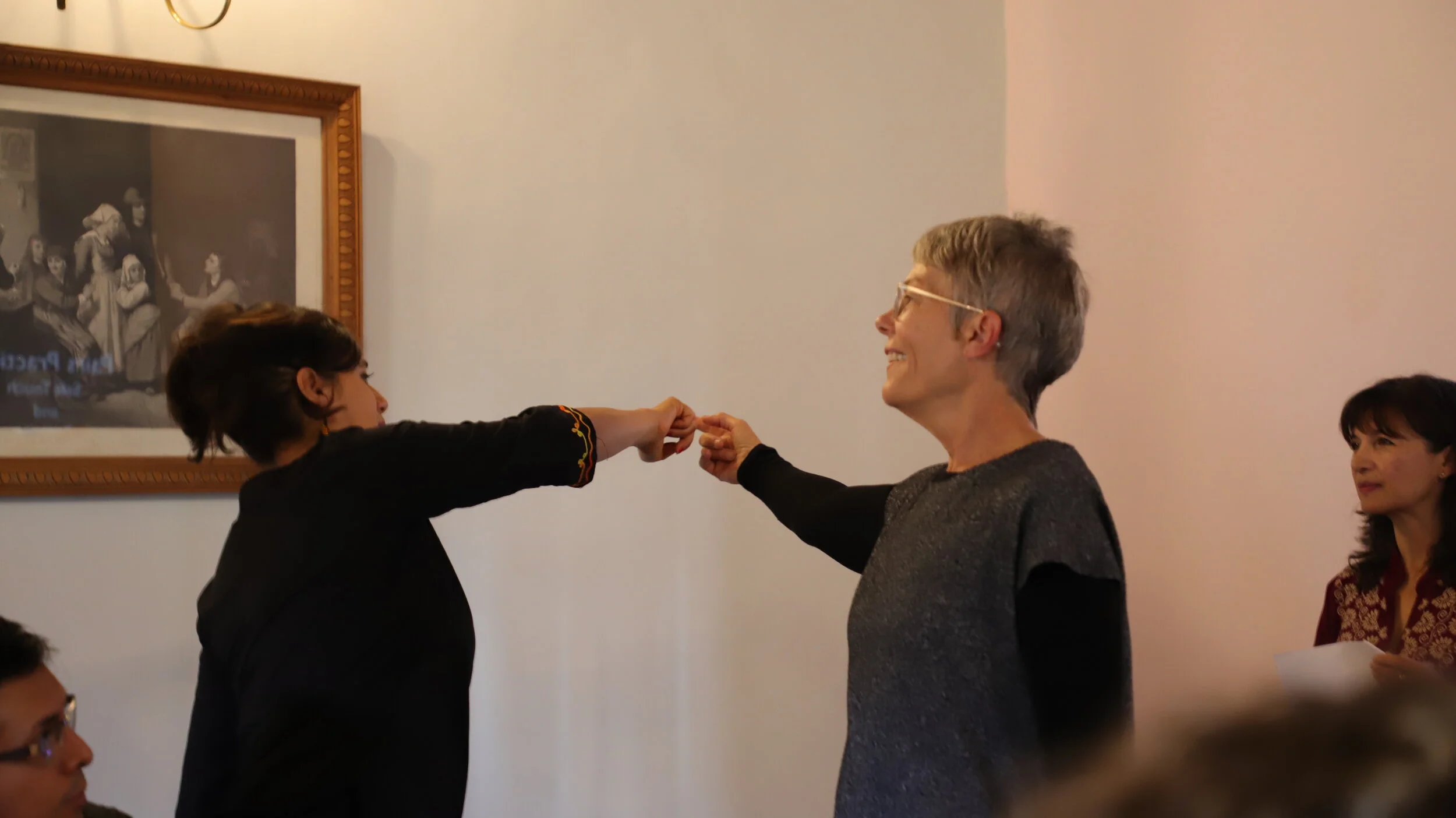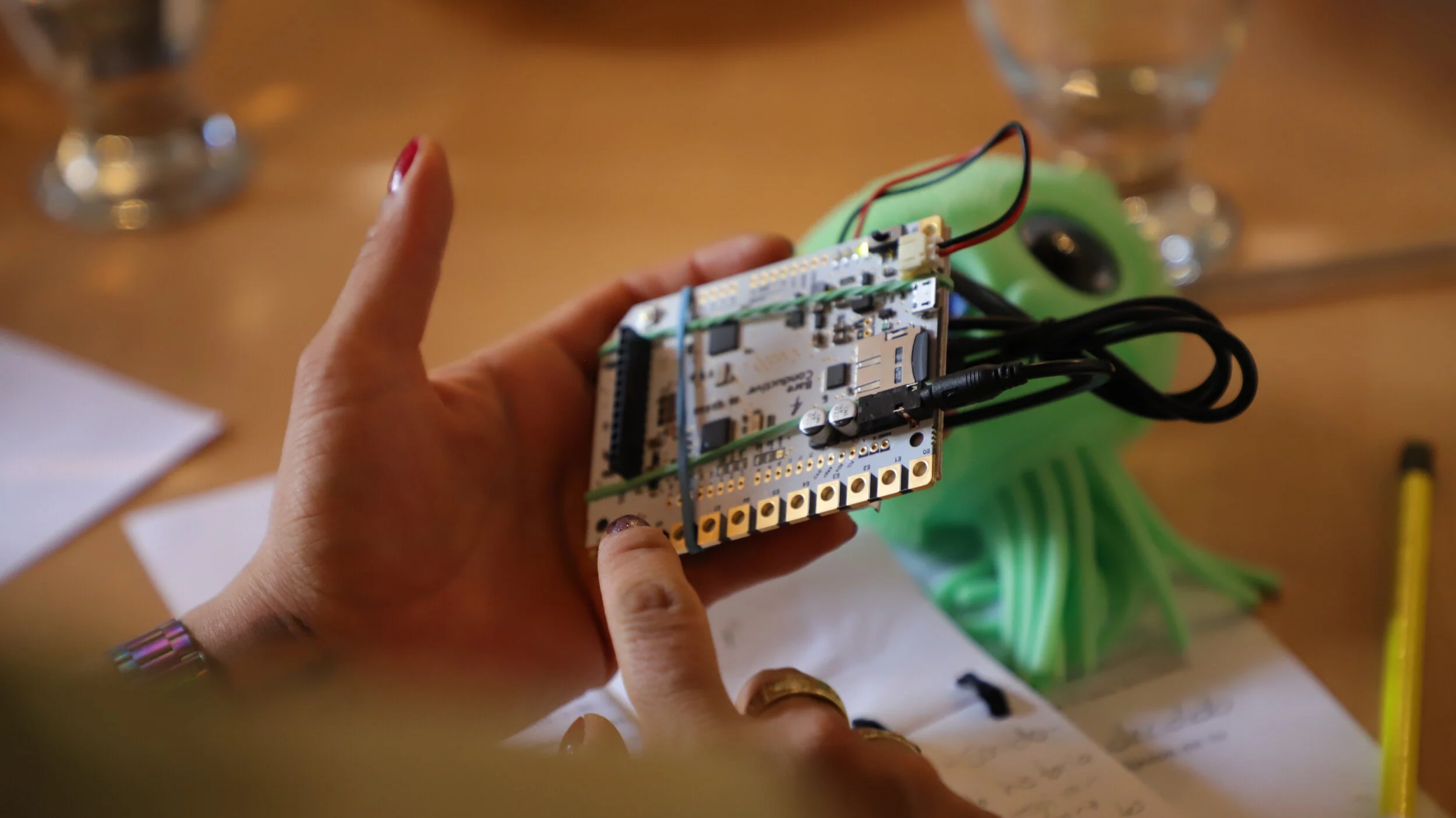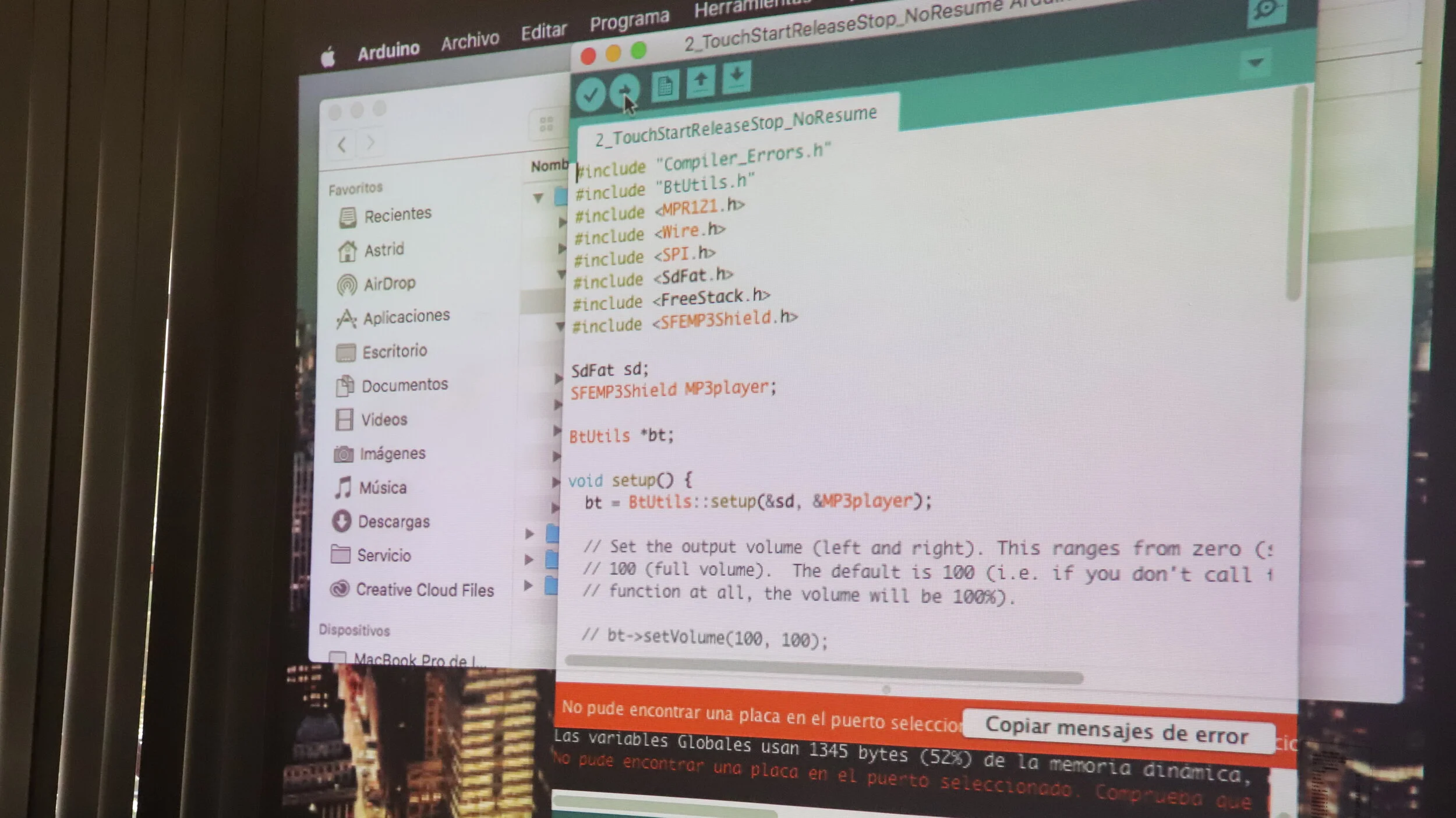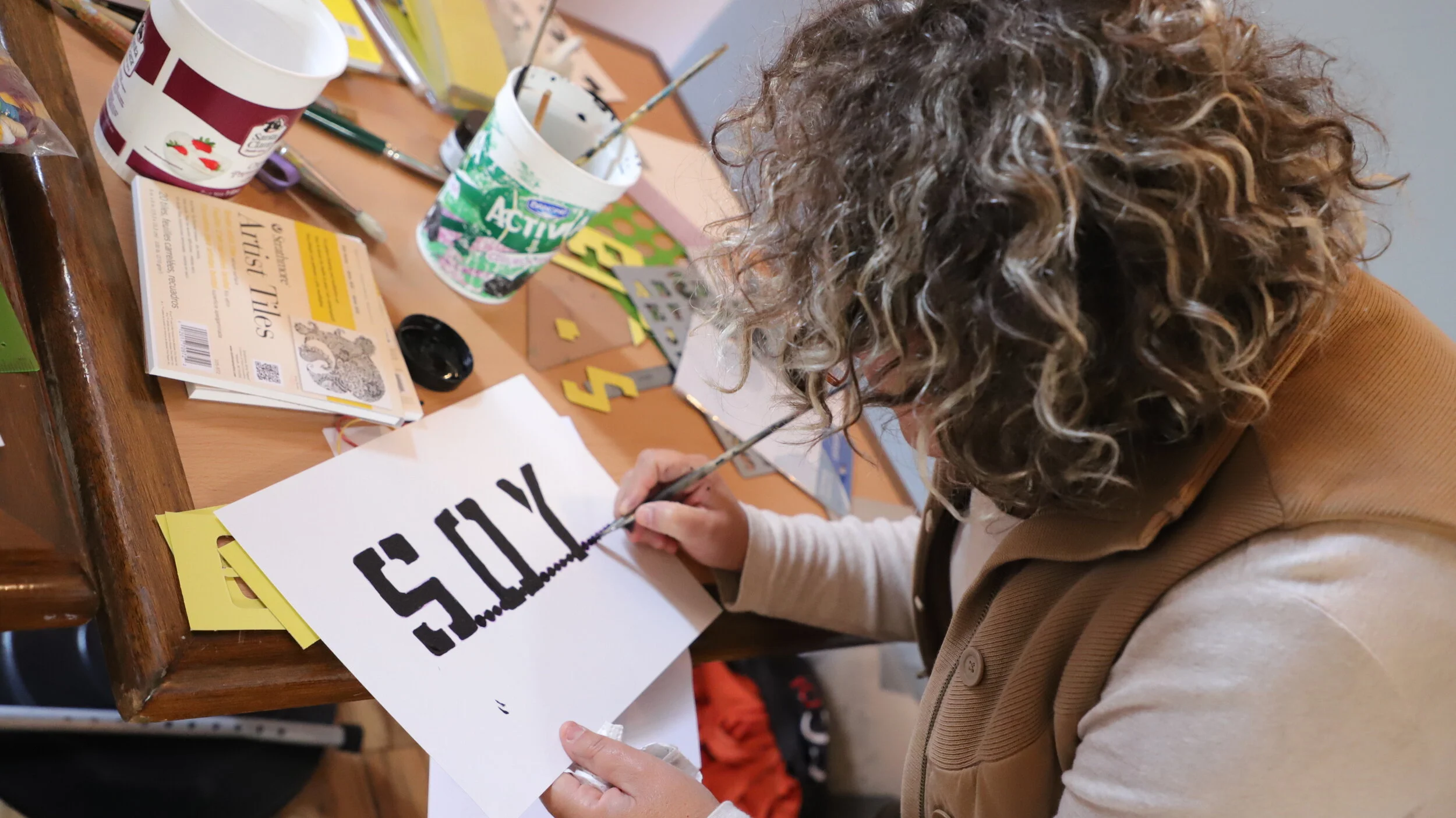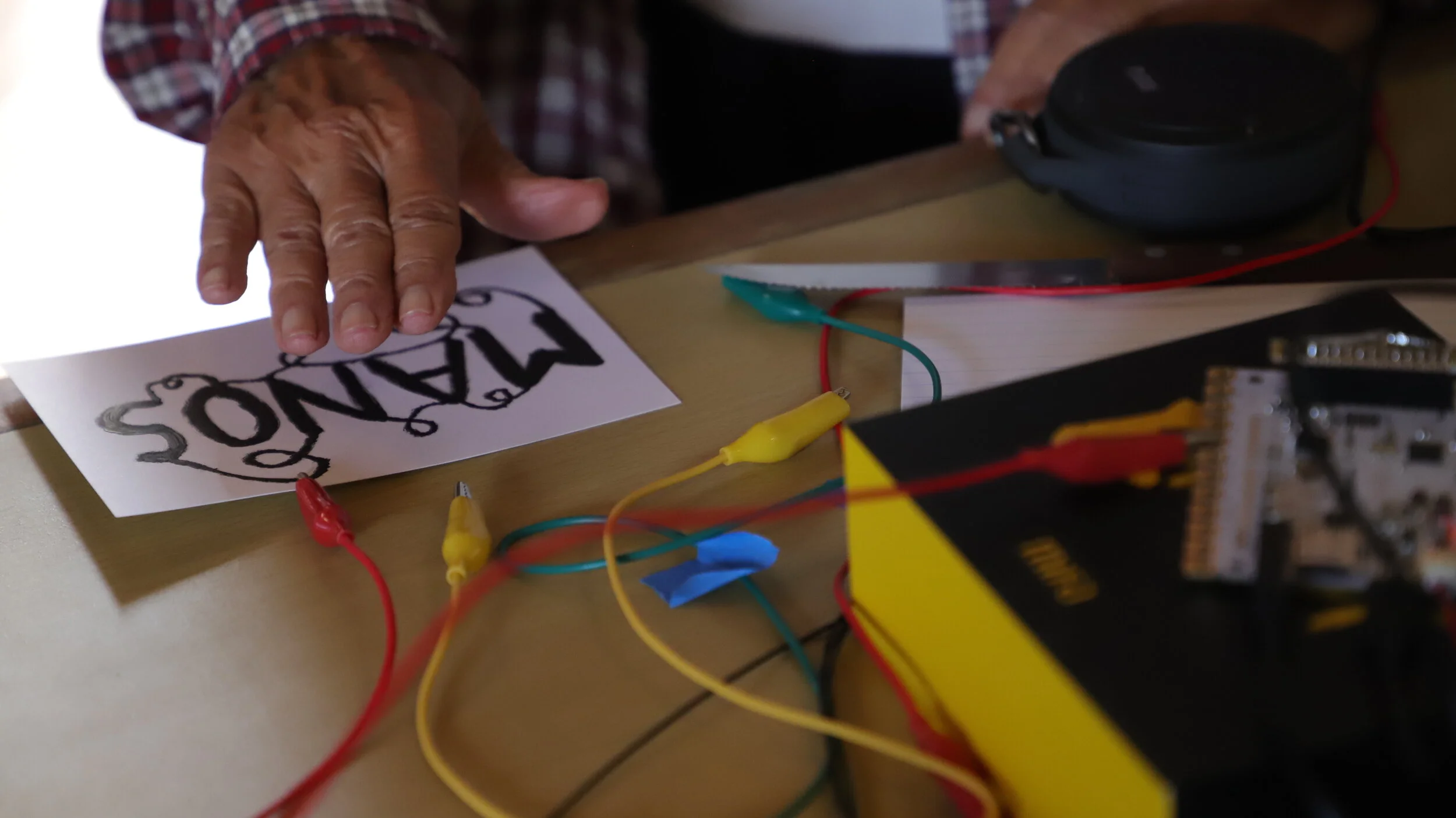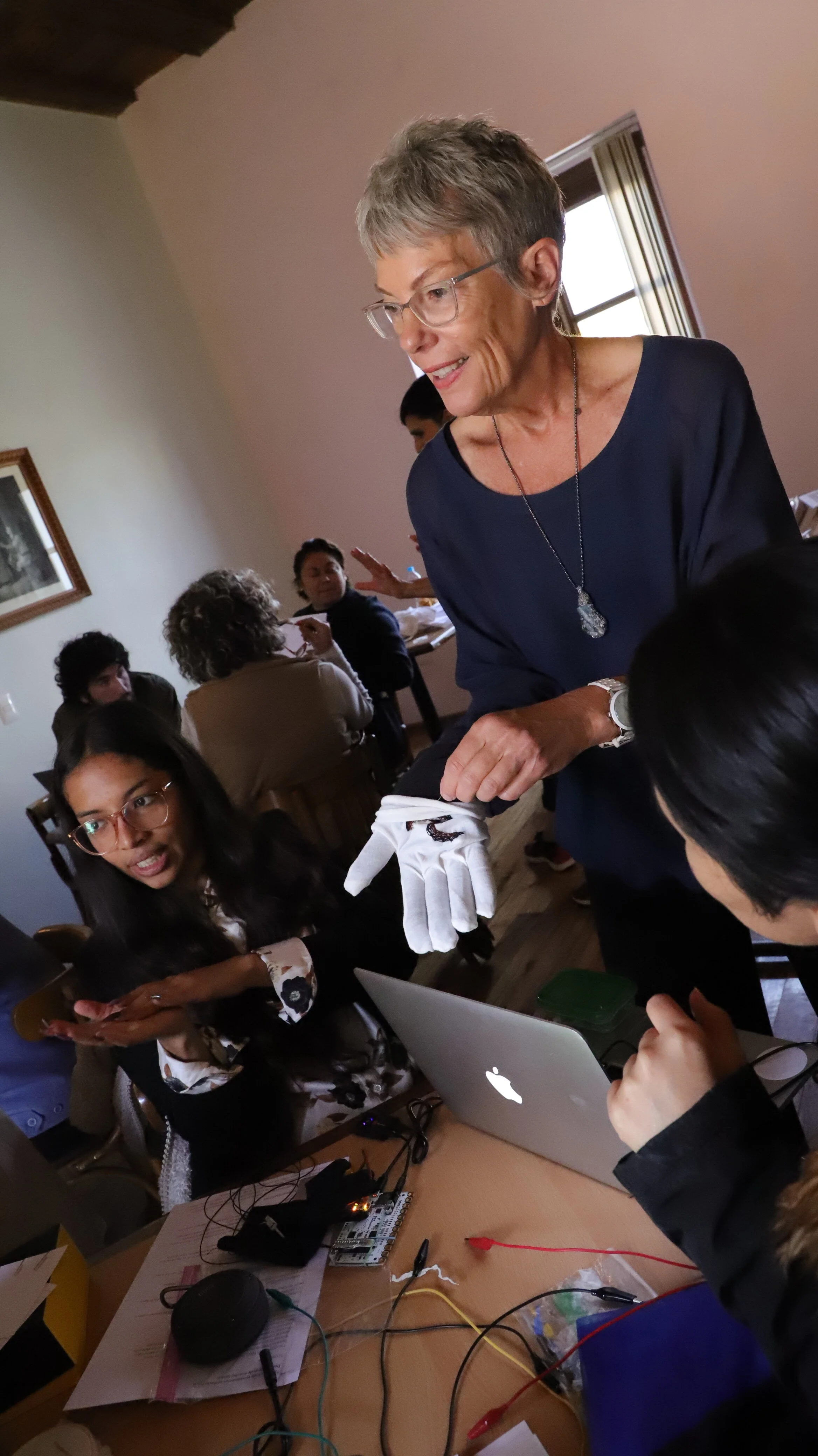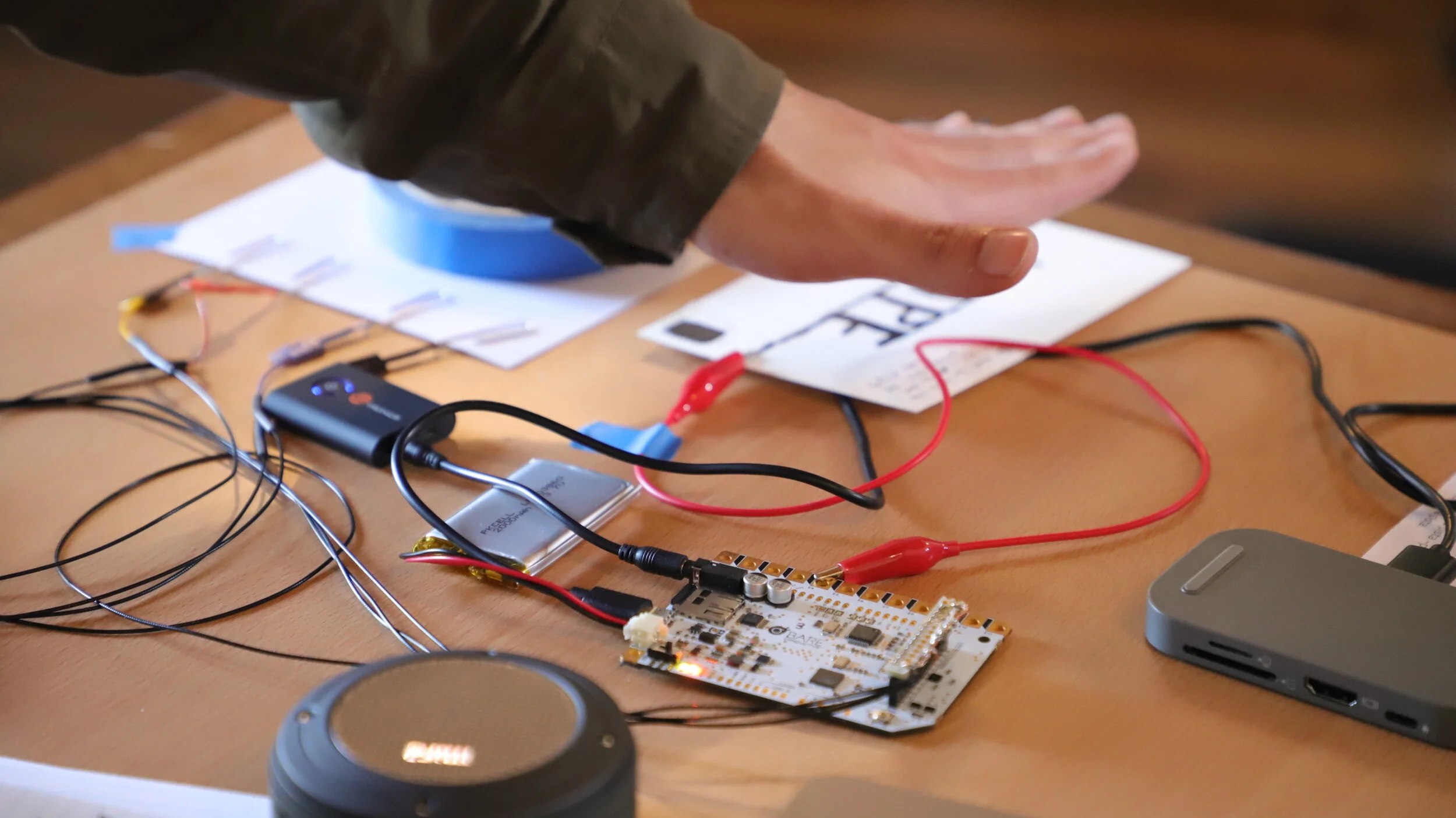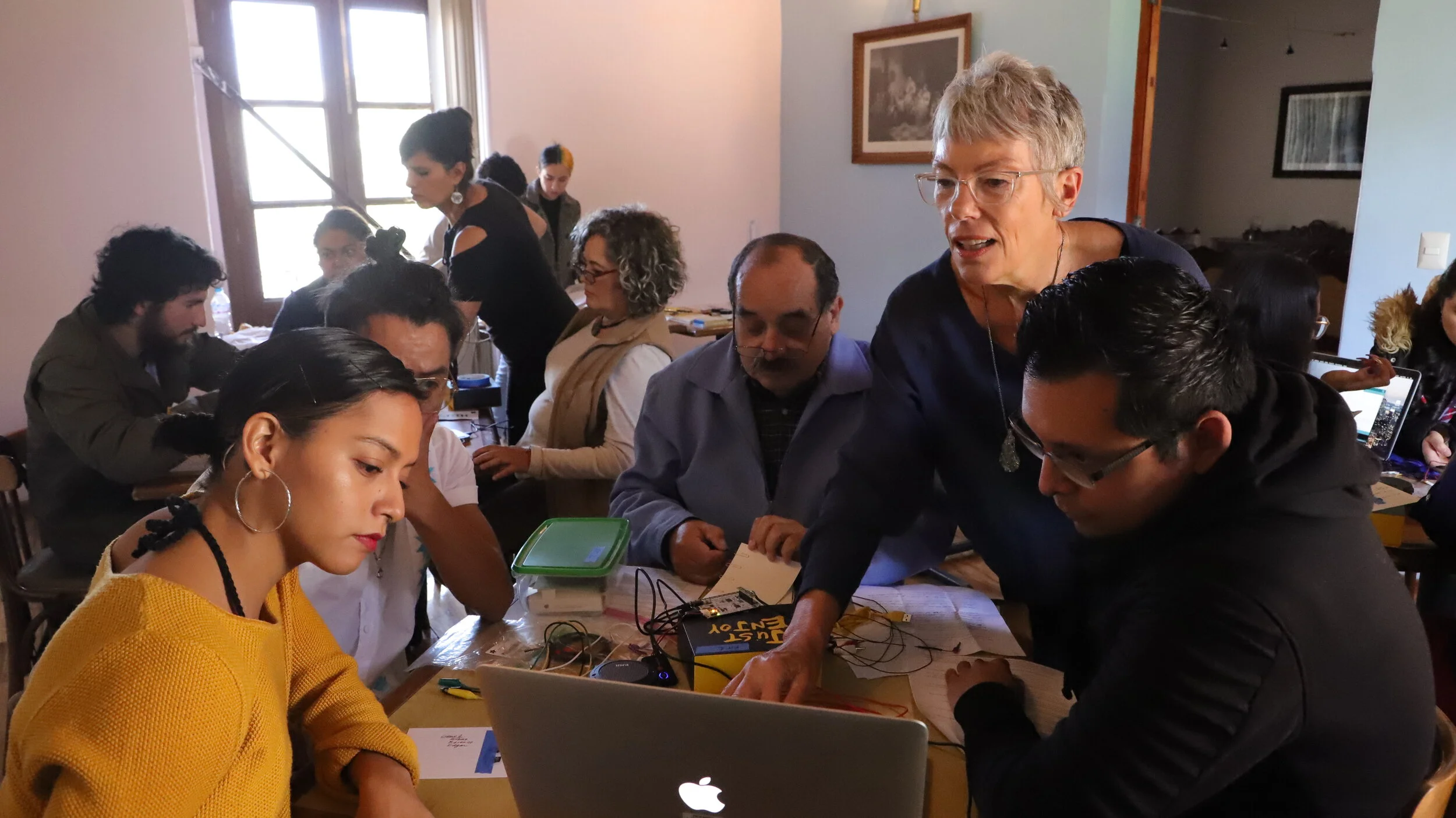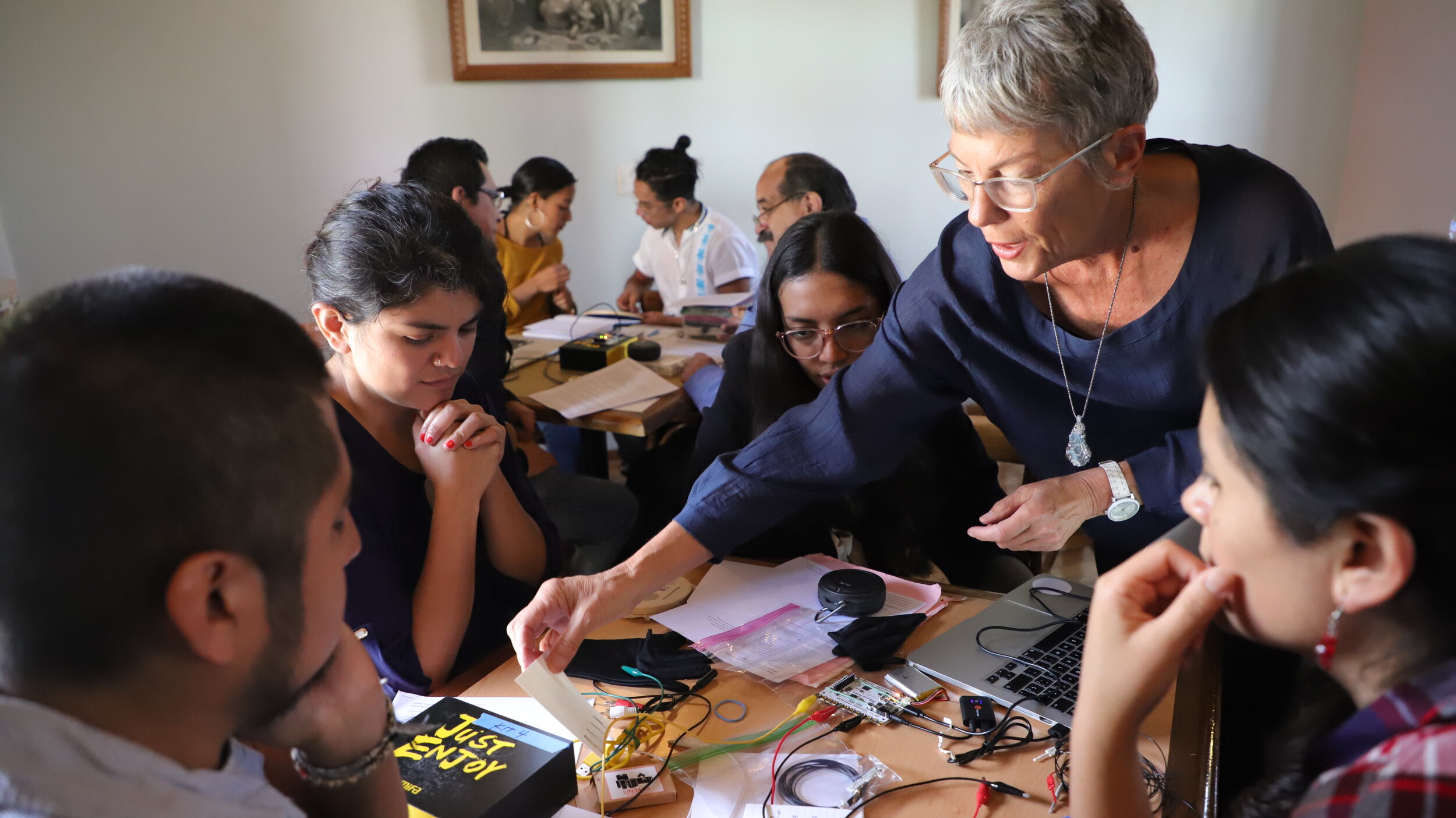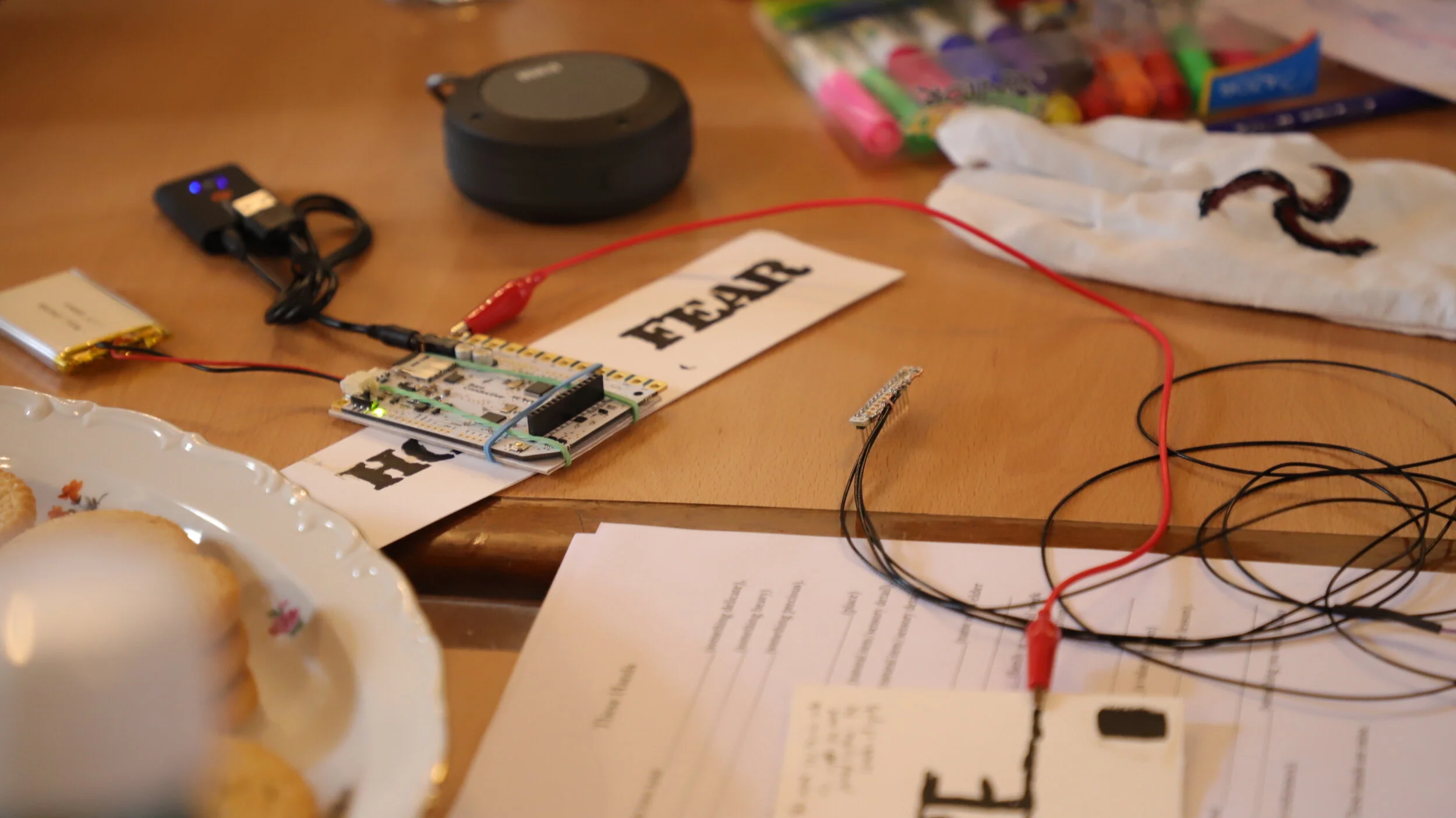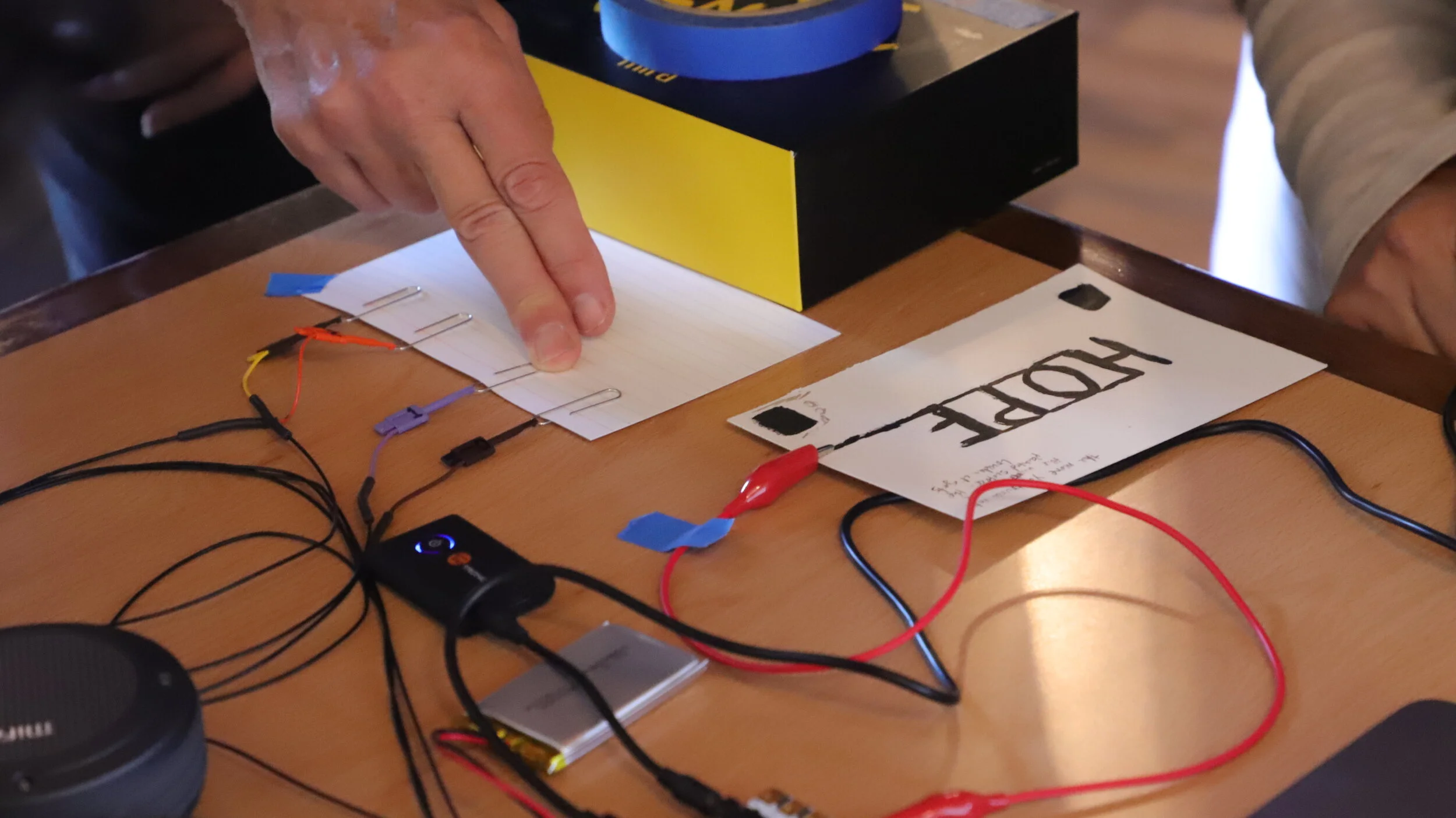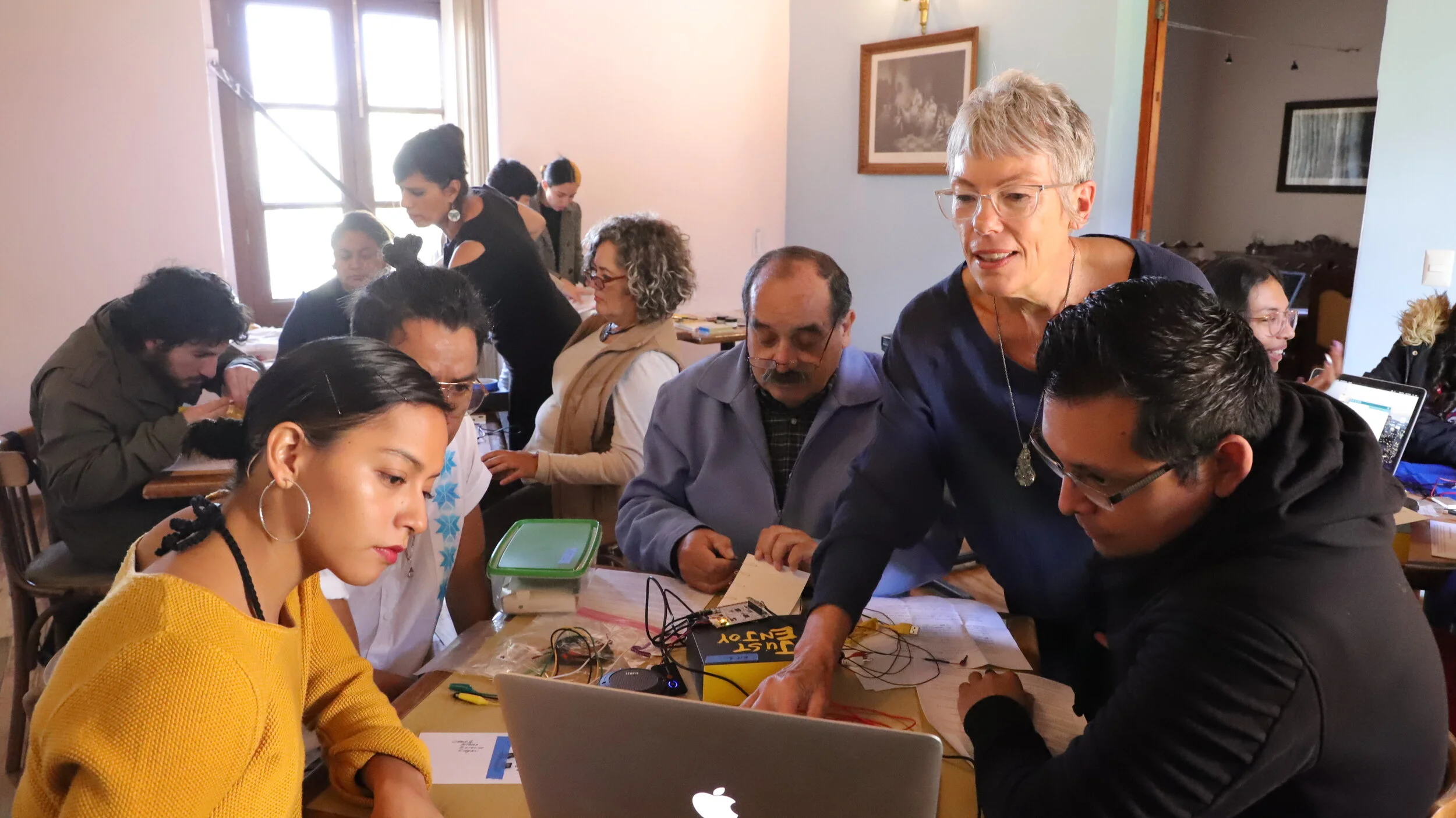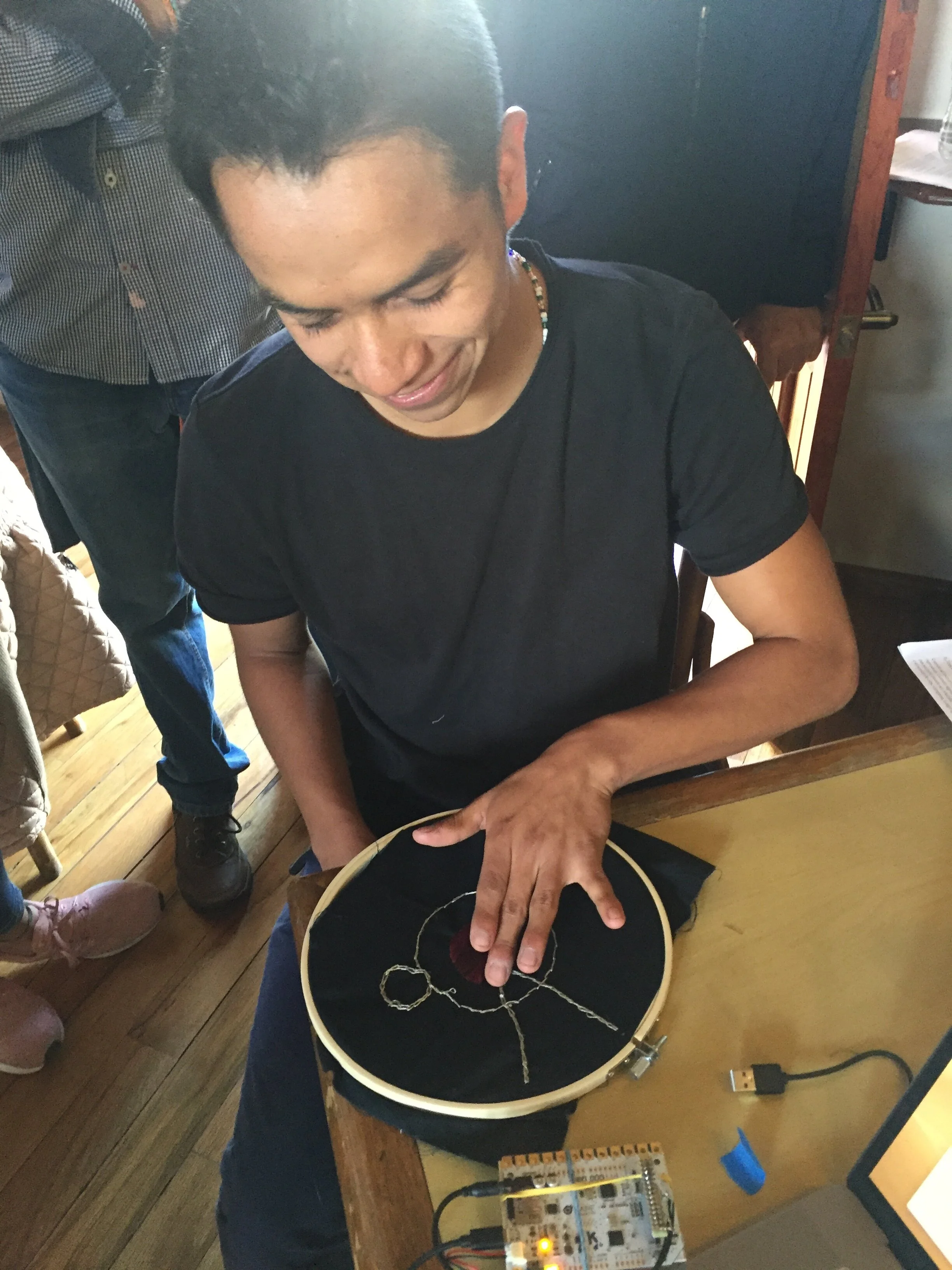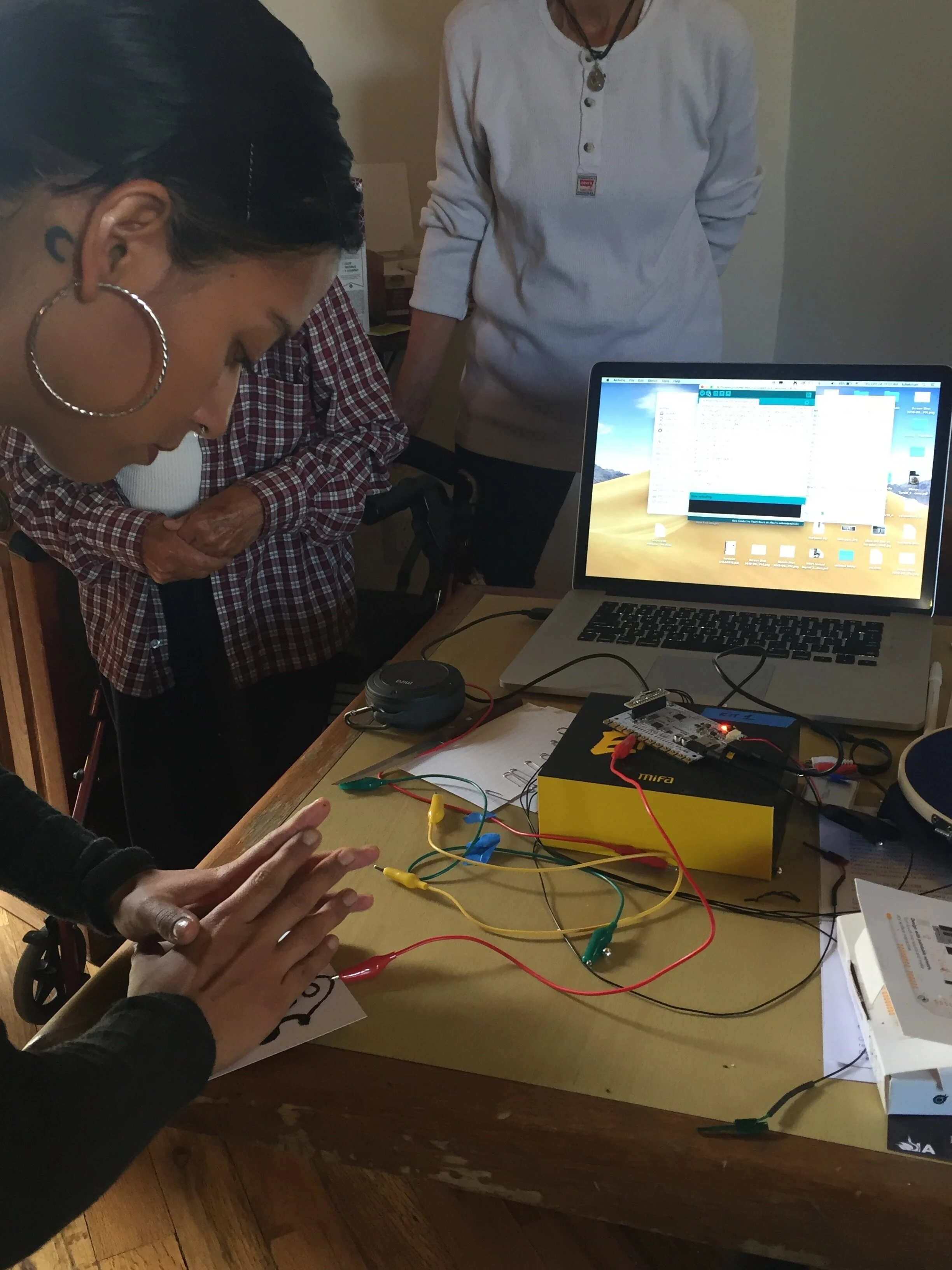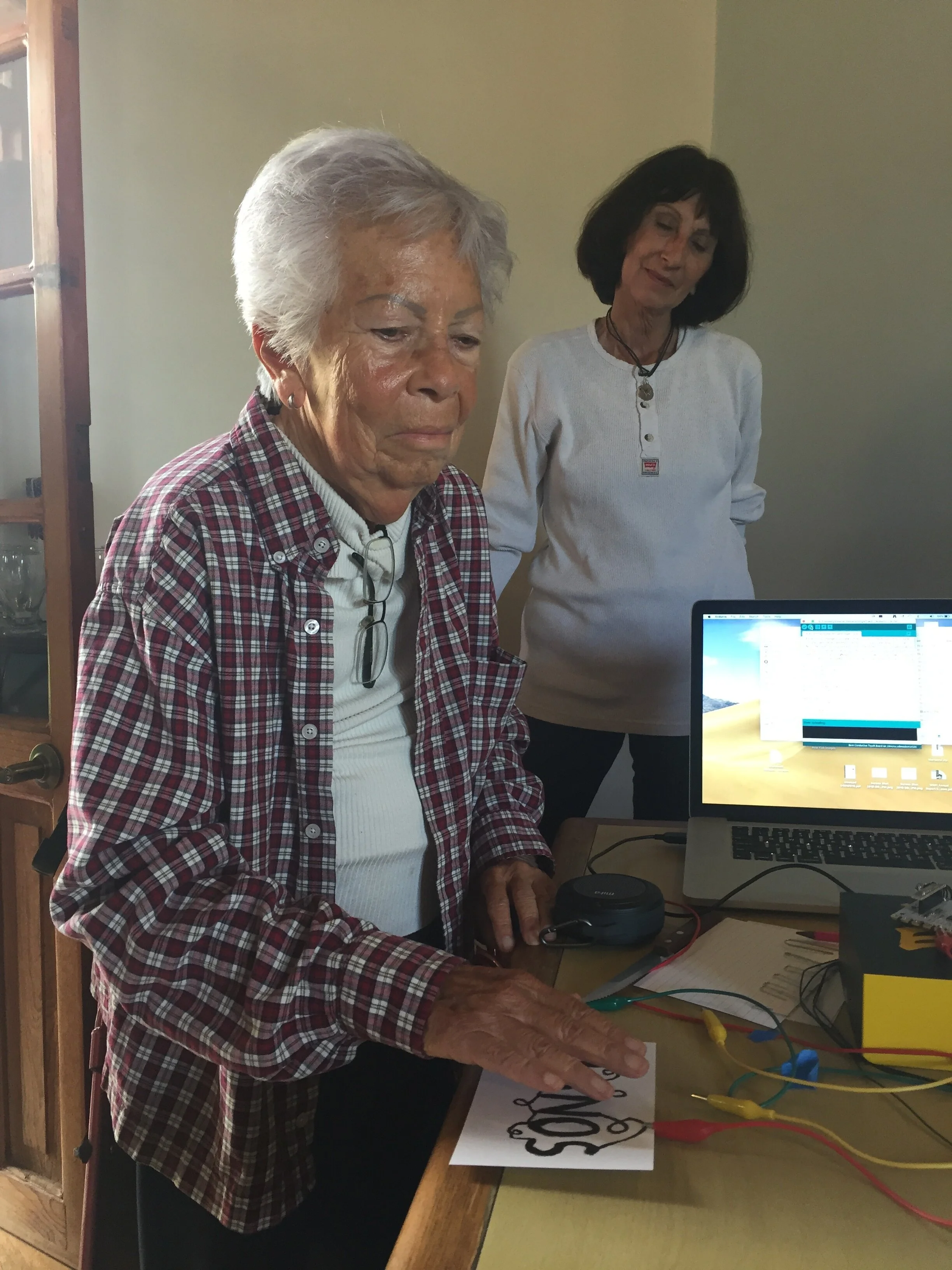When We Touch: Workshop
Let’s expand the language of touch. We enter into a sensuous continuum with the artwork, oscillating between the representation of another’s experience and reflection on our own, so as to generate new shared subjectivities.
Tactile and Haptic Exercises

Design by Milton U. Onofre Vásquez. To hear his story, he invited participants to hug him for the duration of the story.
Writing and Recording Stories

Sharing Bertha’s story.
Storywriting
A story is the shortest distance between two people.
Write and record messages or stories in the language of your choice using simple recording devices, pre-existing audio files when necessary, and basic audio editing software. Tactile sensors we build play these messages in the voices of the writers. For the workshop in Mexico we used the exercise “These Hands” as the writing prompt (courtesy of the Story Center, Berkeley, CA, USA). Each story if edited in sections to be mapped onto design elements.
Physical Computing, Programming and Electronics
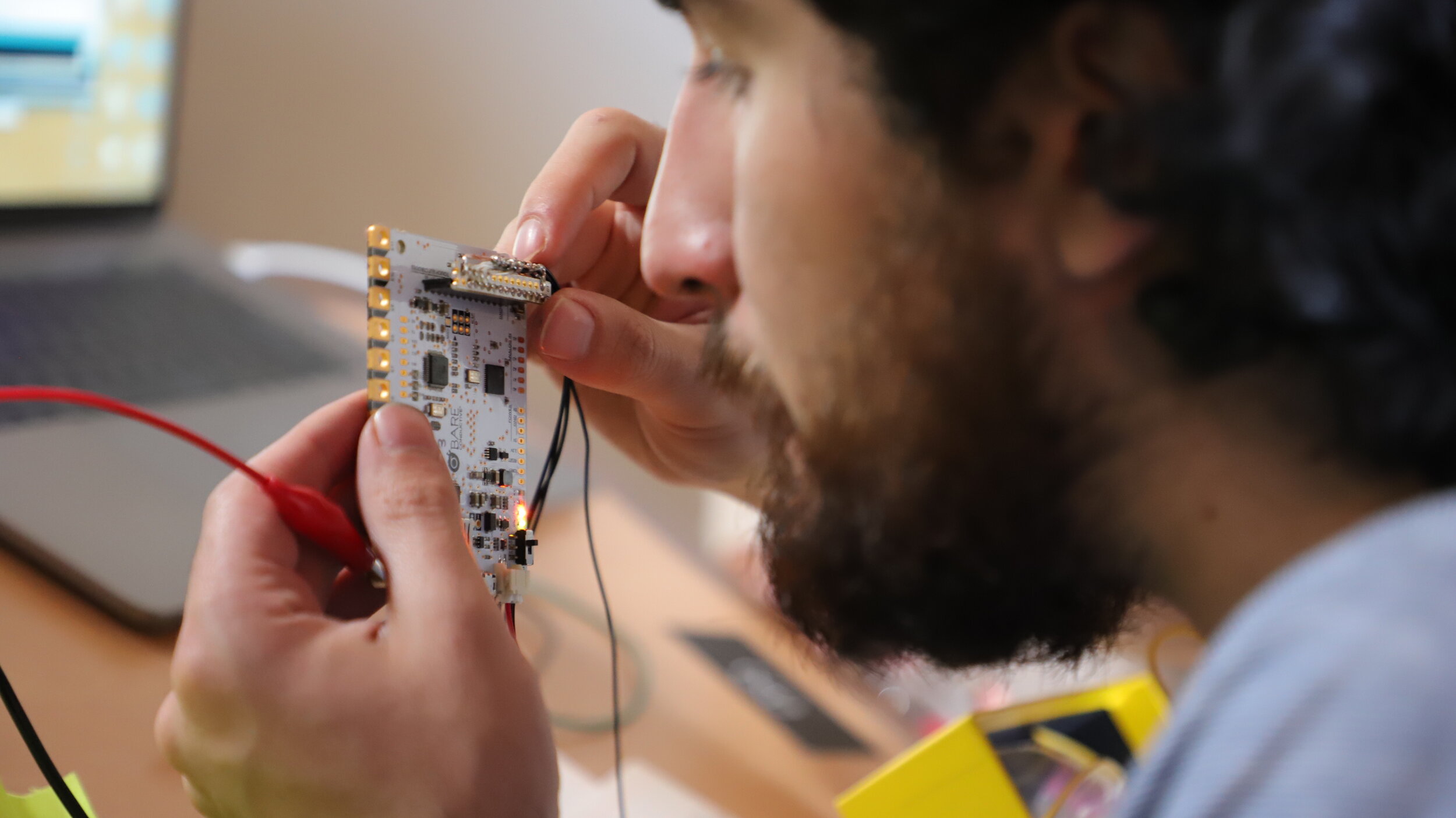
Pablo Lavaniegos exploring the TouchBoard.
Computing and sensor design
Experiment with and learn the basics of physical computing by creating touch sensitive interfaces using pre-existing computer coding (Arduino sketches), prepared microprocessors (Bare Conductive Touch Board), sensors made with thread, paint, and other conductive materials. Special thanks to Craig James for programming and fabrication collaboration.
